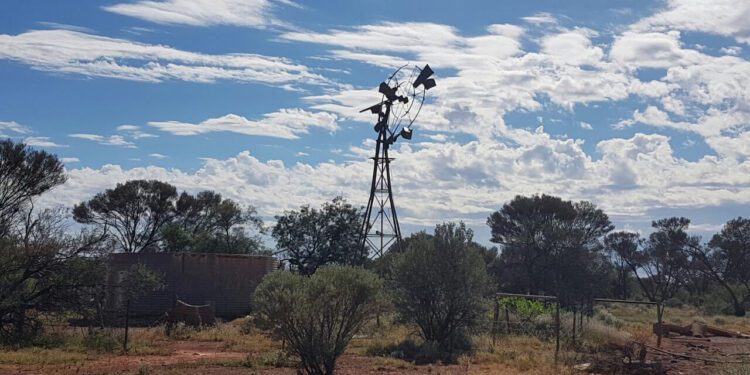Kingwest Resources (ASX:KWR) says initial results from 29 of 80 holes drilled so far at the Sir Laurence target at Lake Goongarrie in Western Australia demonstrate significant mineralisation up to 800m south and along strike of discovery line 5.
“These excellent results including 28m @ 1.9 g/t Au from 20m in follow up drilling at Sir Laurence, are very significant in that they are 800m south of, and along strike of, the discovery Line 5 but mineralisation is at a much shallower depth and includes bedrock mineralisation,” CEO, Ed Turner, said.
“Significant bedrock mineralisation has also been intersected on Lines B and C. This reinforces our interpretation of Sir Laurence as having the potential to be a large mineralised system. Line A is the first line of drilling within the current program, and we eagerly anticipate results from all of the remaining drill holes within the Sir Laurence Prospect.”
80 holes (KGA0615 – O694), have been completed in the current aircore drilling program for 6,064m. Assays have been received for 29 holes (KGA0615 – KGA0643 from Lines A, B and C with the remainder pending. 13 more aircore holes are planned at Sir Laurence in the current programme to the north of Line I.
Drilling to date, which started on Line A, 800m to the south of Line 5, has intersected significant results in 10 holes including 28m @ 1.9 g/t Au from 20m in KGA0627 and 8m @ 2.2 g/t Au from 12m in the adjoining KGA0626 on Line A.
Mineralisation in KGA0627 is partly in the conglomerate bedrock and partly in the overlying sediments. This mineralisation appears to be along strike from the mineralisation intersected on Line 5, 800 metres to the north and therefore indicates the potential for a large mineralised system. Assays have also been received from Lines B and C with additional significant intersections in eight holes including 16m @ 0.18 g/t Au from 60m (alluvial) over 7m @ 0.16 g/t Au from 76m (bedrock) in KGA0632, 4m @ 0.60 g/t Au from 80m in KGA0639 and 4m @ 0.19 g/t Au from 64m in KGA0642.
Vein Quartz Gravel Assay Results
In addition, KWR resampled a mineralised single metre from the first round of aircore drilling in order to ascertain the exact material that contained the gold within the paleochannel sediments.
Two samples of individual vein quartz gravel clasts were hand-picked from the basal gravel intervals in KGA0409, which was drilled on Line 5 in the first round of drilling. An original composite assay of 3m @ 6.5g/t Au from 86m was reported within KGA04091. The quartz clasts were then washed in detergent and carefully rinsed to remove any fine detrital gold or gold-bearing clay adhering to them. Two samples of clasts were then submitted to SGS in Kalgoorlie for fire assay gold analysis. This was done to confirm if the gold in the alluvial channel was in the quartz gravels or in the clays that contain the gravels.
Sample RBS71119 returned 30.98g/t Au and sample RBS71120 returned 5.38g/t Au. The gold is therefore present within the actual vein quartz, rather than as fine-grained free gold within the associated alluvial clays. The presence of high gold values in the vein quartz clasts demonstrates that the gold in these gravels is being directly derived from high-grade, gold-bearing vein quartz reefs somewhere in the immediate vicinity. It confirms that the bedrock at the Sir Laurence gold discovery is gold mineralised and contains high grade auriferous quartz reefs. Deeper, more penetrative diamond and RC drilling is required to locate these reefs.
For further information please visit: https://www.kingwestresources.com.au/












